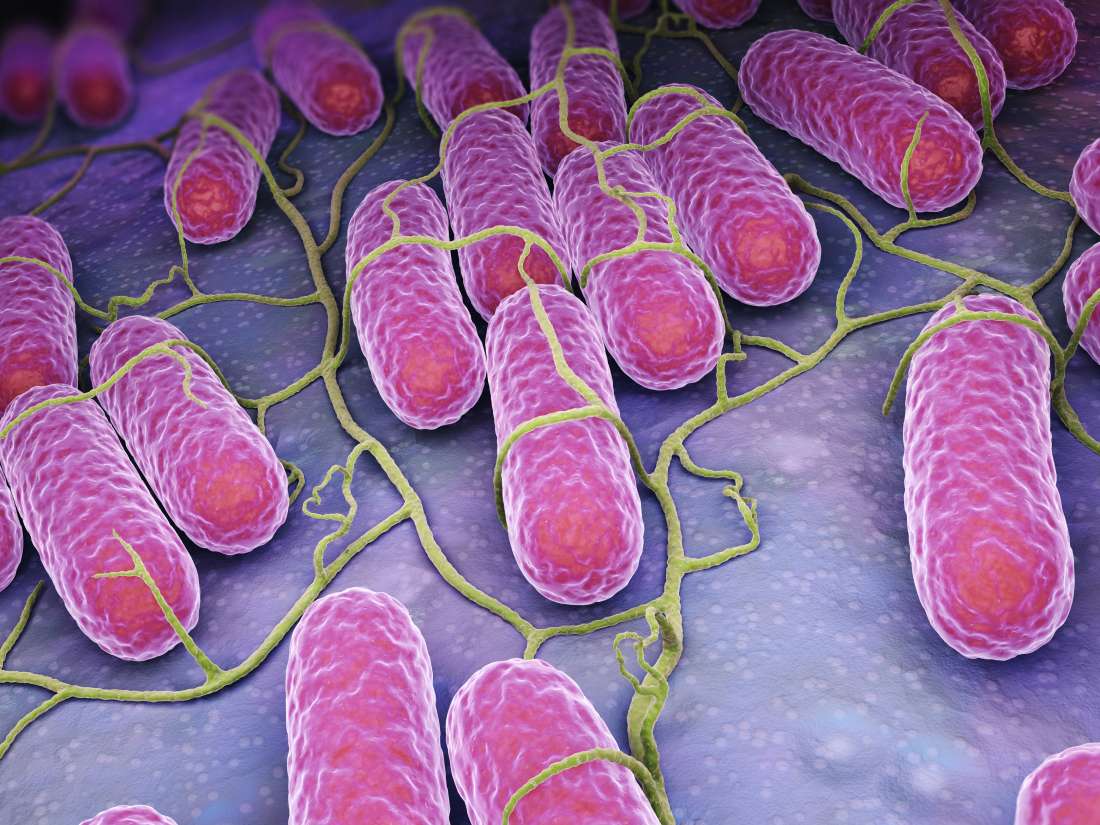What is Salmonellosis?
I was watching a television programme and the presenter was discussing about Salmonellosis which she said can be acquired from contaminated food. Kindly share details about this problem to your teeming readers. Celina C. Thanks Celina for your question, let us start by explaining about Salmonella which is a gram negative bacteria belonging to the […]

I was watching a television programme and the presenter was discussing about Salmonellosis which she said can be acquired from contaminated food. Kindly share details about this problem to your teeming readers.
Celina C.
Thanks Celina for your question, let us start by explaining about Salmonella which is a gram negative bacteria belonging to the enterobacteriaceae family. Salmonella is a ubiquitous and hardy bacteria that can survive several weeks in a dry environment and several months in water. Typically, such serotypes cause gastroenteritis, which is often uncomplicated and does not need treatment, but the disease can be severe in the young, the elderly, and patients with weakened immunity.
Now coming back to Salmonellosis, it is a disease caused by the bacteria Salmonella. It is usually characterized by acute onset of fever, abdominal pain, diarrhoea, nausea and sometimes vomiting. The onset of the disease symptoms occurs 6–72 hours (usually 12–36 hours) after ingestion of Salmonella, and illness lasts 2–7 days.
Symptoms of salmonellosis are relatively mild and patients will make a recovery without specific treatment in most cases. However, in some cases, particularly in children and elderly patients, the associated dehydration can become severe and life-threatening.
How it is transmitted?
- Salmonella bacteria are widely distributed in domestic and wild animals. They are prevalent in food animals such as poultry, pigs, and cattle; and in pets, including cats, dogs, birds, and reptiles such as turtles.
- Salmonella can pass through the entire food chain from animal feed, primary production, and all the way to households or food-service establishments and institutions.
- Salmonellosis in humans is generally contracted through the consumption of contaminated food of animal origin (mainly eggs, meat, poultry, and milk), although other foods, including green vegetables contaminated by manure, have been implicated in its transmission.
- Person-to-person transmission can also occur through the faecal-oral route.
- Human cases also occur where individuals have contact with infected animals, including pets. These infected animals often do not show signs of disease.
How it can be treated?
- Treatment in severe cases is electrolyte replacement (to provide electrolytes, such as sodium, potassium and chloride ions, lost through vomiting and diarrhoea) and rehydration.
- mRoutine antimicrobial therapy is not recommended for mild or moderate cases in healthy individuals. This is because antimicrobials may not completely eliminate the bacteria and may select for resistant strains, which subsequently can lead to the drug becoming ineffective. However, health risk groups such as infants, the elderly, and immunocompromised patients may need to receive antimicrobial therapy. Antimicrobials are also administered if the infection spreads from the intestine to other body parts.
- Because of the global increase of antimicrobial resistance, treatment guidelines should be reviewed on a regular basis taking into account the resistance pattern of the bacteria based on the local surveillance system.
What are the preventive methods?
- Ensure food is properly cooked and still hot when served.
- Avoid raw milk and products made from raw milk. Drink only pasteurized or boiled milk.
- Avoid ice unless it is made from safe water.
- When the safety of drinking water is questionable, boil it or if this is not possible, disinfect it with a reliable, slow-release disinfectant agent (usually available at pharmacies).
- Wash hands thoroughly and frequently using soap, in particular after contact with pets or farm animals, or after having been to the toilet.
- Wash fruits and vegetables carefully, particularly if they are eaten raw. If possible, vegetables and fruits should be peeled.
- Both professional and domestic food handlers should be vigilant while preparing food and should observe hygienic rules of food preparation.
- Professional food handlers who suffer from fever, diarrhoea, vomiting or visible infected skin lesions should report to their employer immediately.
The five keys to Safer Food are:
Keep clean and separate raw and cooked cook thoroughly and keep food at safe temperatures and use safe water and raw materials.
Other recommendations for producers of fruits, vegetables and fish are as follows:
- Practice good personal hygiene AND protect fields from animal faecal contamination AND keep harvest and storage equipment clean and dry.
